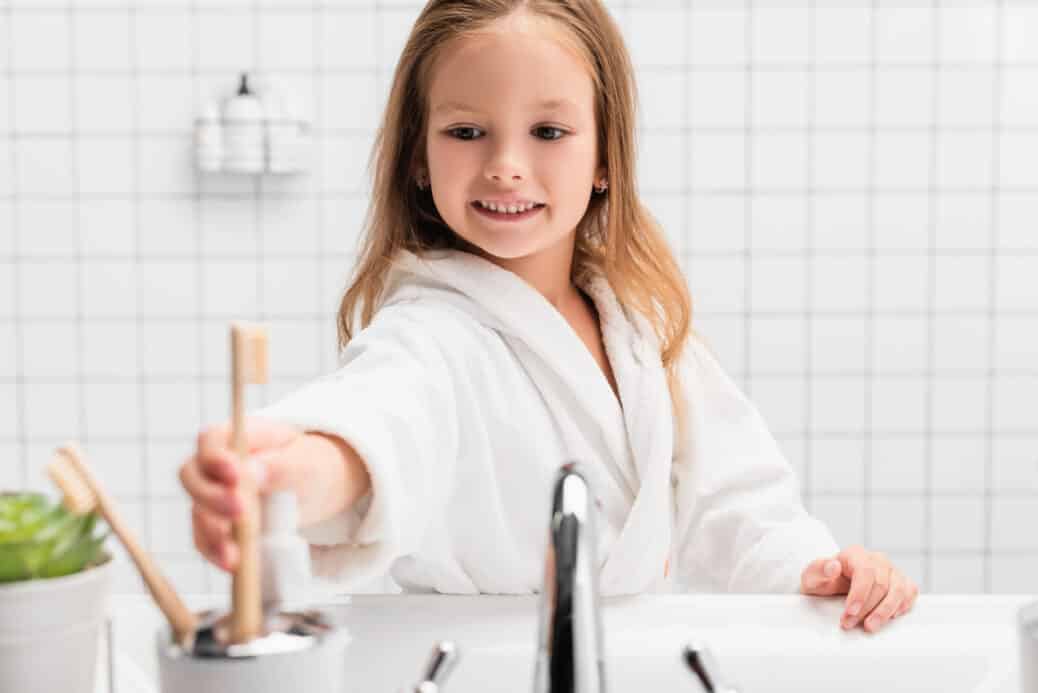Bathrooms present many hidden risks for young children. Slippery floors, hot water, reachable chemicals, sharp edges, small items and unsupervised water can lead to serious accidents.
Statistics show that many childhood injuries happen at home and frequently in bathrooms.
It is wise to plan ahead, take simple safety efforts and create a bathroom where children are safe to explore under supervision.
Below are five practical tips to childproof your bathroom and prevent injuries.
Why This Matters
Before looking at tips it helps to understand the scale of the problem. In Queensland hospitals there are at least 3,700 bathroom injuries per year, with more than 40 percent of those affecting children under five years of age.
The main causes include falls (around 47 percent), poisoning (18 percent), finger jam injuries (7 percent) and burns (6 percent).
Another national survey reports that infants are 7.9 times more likely than adults to be hospitalised for injury by drowning or submersion. Over half of such hospital cases involving young children occur in bathtubs.
With such figures in mind parents and carers have strong reason to act. Below are five key actions you can take to reduce risk significantly.
1. Constant Supervision and Small Water Depths
It is obvious yet often neglected: never leave a young child alone in the bath or near any standing water. Even very shallow water can pose a drowning risk.
Water at toddler height may seem safe but children can slip, lose balance or be submerged in seconds.
Before bath-time prepare everything you need: towel, soap, toys. That reduces temptation to leave the child unsupervised. Maintain water at low depth. A small amount of warm water is safe for play and washing if you remain at arm’s reach. After use always empty the bath and close the door behind you.
2. Prevent Burns and Scalds
Hot water is a frequent cause of serious injury. Young skin burns more badly and faster than adult skin.
Many homes have water coming from taps that exceed safe temperatures. Always test water with your wrist or elbow before placing a child into it.
Cold water should go on first and hot water switched off first after filling.
Consider installing anti-scald devices, temperature regulators or a tempering valve on taps and water heaters.
Keep bathroom heating elements or hot surfaces well out of reach. Also ensure knobs are not easy for small hands to twist on their own.
3. Make Floors and Surfaces Slip-Safe
Bathrooms tend to be wet or steamed up very often. Tiles, porcelain, glass and smooth surfaces become dangerous when wet.
Slips or falls are among the most common causes of injury in bathroom injuries for young children.
Use non-slip mats inside and outside the bathtub. Bath and shower surfaces can benefit from non-slip stickers or profile strips.
Mats with rubber undersides reduce sliding. Keep towels, bath mats, toys and bath-access items tidy so they do not become tripping hazards.
4. Secure Chemicals, Medicines and Dangerous Items
Bathrooms are full of items that are tempting to curious children and dangerous if misused. Cleaning products, shampoos, conditioners, lotions, mouthwash, medications, razors, scissors, mirror shards, electric curling irons or hair straighteners are all risks.
Store all harmful substances in locked cabinets or those with safety latches. If items must be out, place them high up or far back so they are out of reach.
Always cap bottles and ensure lids are screwed on tightly. Appliances should be unplugged after use and stored safely. Use outlet covers for electrical sockets.
5. Design Choices and Adaptations for Long-Term Safety
Some improvements are part of design or renovation decisions. Others are small adjustments you can make right now.
- Install grab rails or handrails near the bathtub or shower entrance to help a child or a parent hold on safely.
- Round off sharp edges where possible, for example on vanities or bath surrounds. You can use corner protectors for temporary fixes.
- Use child-friendly tap covers that soften sharp metal and reduce burn risk.
- Fit shelves or cabinets at heights that adult hands can reach easily but that children cannot.
- Use anti-slip coatings on surfaces or tiles when renovating.
- For hot water systems ensure that the temperature is set to a safe maximum. Many standard guidelines suggest no more than 50 degrees Celsius at tap outlets.
Putting It All Together
Creating a bathroom that is safe for small children requires a mix of vigilance, good habits and physical safety features. Here are suggestions for everyday care:
- Always supervise children in the bathroom, even when they are older, because slips or accidents can occur quickly.
- Keep one hand free during bath time or showering so you can steady the child if needed.
- Teach children about water safety and hot surfaces as soon as they begin to understand.
- Regularly inspect the bathroom for hazards: loose tiles, sharp edges, wiring, slippery surfaces, leaking taps. Fix problems immediately.
Final Thoughts
Childproofing a bathroom may feel like extra work and expense at first. The truth is those efforts are far smaller than the costs—emotional, physical and financial—that follow when an accident occurs.
The statistics are clear: many bathroom injuries happen to children under five, many involve falls, burns or poisoning.
By acting early you protect the most vulnerable and build a safer environment for everyone.
Safety is not a one-time thing. It evolves as children grow and explore. Keep adapting, keep watching, and make the bathroom one of the safest rooms in your home.
Simple changes now bring peace of mind and prevent a lifetime of regrets.








